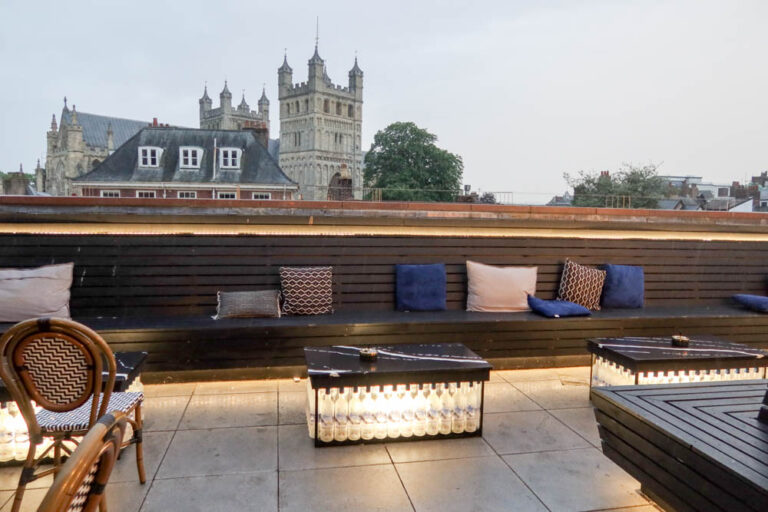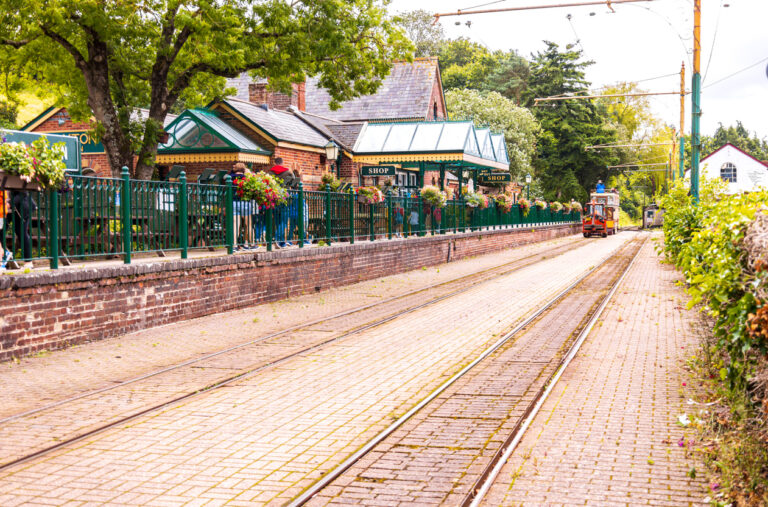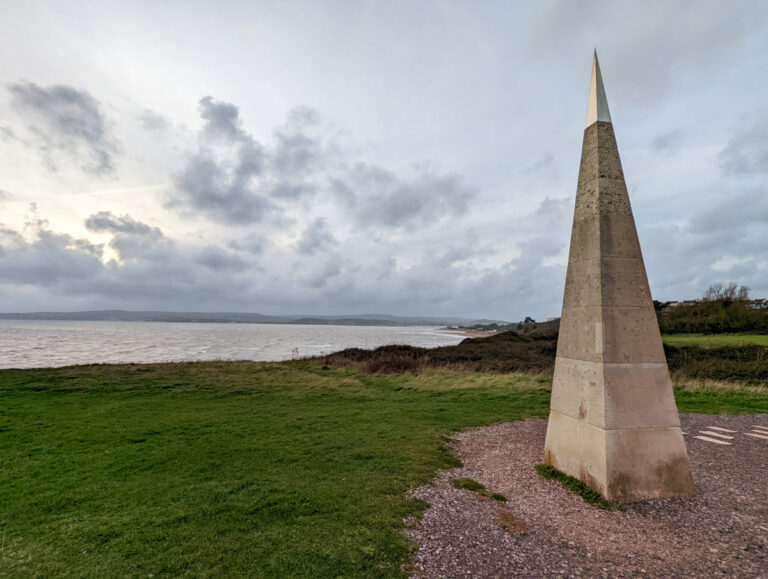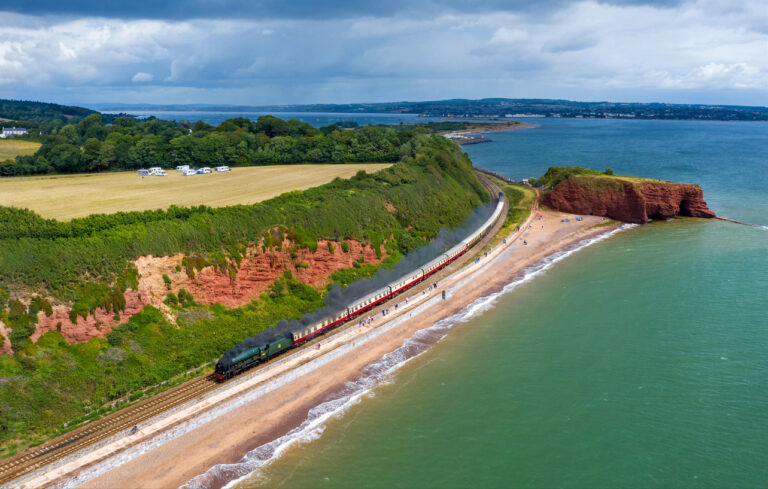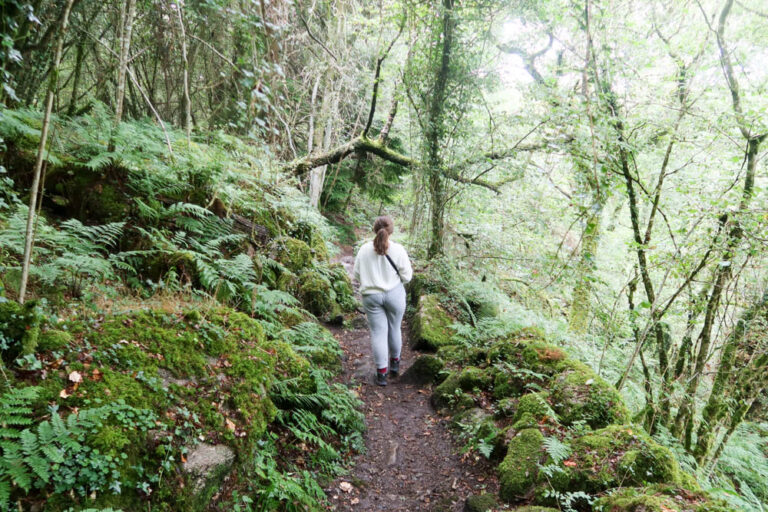22 best things to do in Dartmouth, Devon (2024 guide)
Are you looking for the best things to do in Dartmouth?
Palm trees line the bright blue snaking river, which meanders down towards the coast just south of Dartmouth.
The bright blue water is dotted by white boats.
On the other side, a menagerie of buildings, indicating Dartmouth’s rich history, welcome tourists.
Every now and again, the steam train passes through the other side of the estuary, alerting tourists and locals to its presence by a plume of smoke and its signature puffing sound.
The delightful South Devon town of Dartmouth is packed full of attractions and intrigues.
I now live in and have always had family in Devon, so I’ve visited the town frequently throughout my life and recently returned to put together this blog post.
While Dartmouth’s only a small town, it’s brimming with fascinating things to do – and I’m going to detail them all in this article!
This blog post may contain affiliate links.
Things to do in Dartmouth
The best things to do in Dartmouth include the historic Dartmouth Castle, boat trips up and down the Dart (either to Totnes or Greenway House), nearby beaches like Sugary Cove, Blackpool and Slapton Sands and the peaceful Royal Avenue Gardens. Let’s dive into them!
Dartmouth Castle
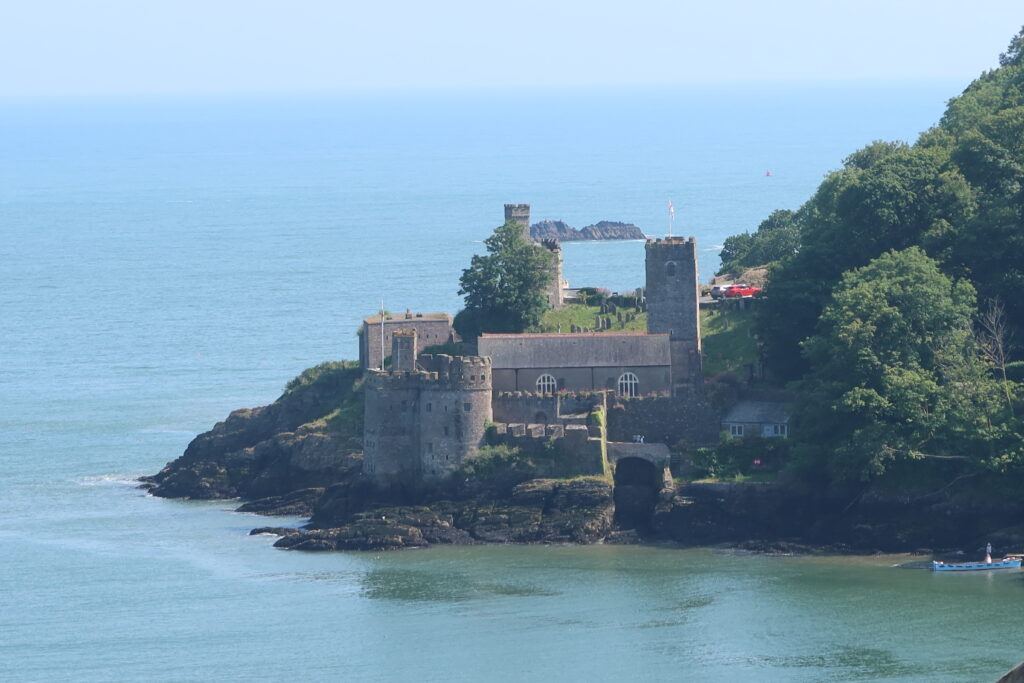
Standing on top of a headland, looking out to the estuary and sea, Dartmouth Castle has long been the town’s main landmark (it dates back to the 14th century).
It was long-feared that enemy ships would use Cornwall and Devon’s estuaries to enter and attack the country, so castles were built along its south coast (Pendennis and St Mawes Castles in Cornwall are other good examples).
The castle was created and fortified over the years. Predominantly, it was owned by Dartmouth town, although as it was actually built on Carew land, Sir Peter Carew took it over at one point (and changed the locks!).
In the Victorian age, increasing anxiety about modern ships and the prospect of enemies attacking Plymouth via Dartmouth meant that the Victorian Forts and Artillery were built.
Nowadays, things are exceptionally peaceful on the River Dart, and the castle’s run by English Heritage as a tourist attraction.
Check out my Dartmouth Castle visitor’s guide for more information.
Psst… if you’re an English Heritage member you can visit Dartmouth Castle, and many other historical sites, for FREE! I’ve been a member for years and love it.
Check out my full English Heritage membership review here or click here to purchase a membership!
Or, take a look at my National Trust vs. English Heritage post.
Dartmouth Museum
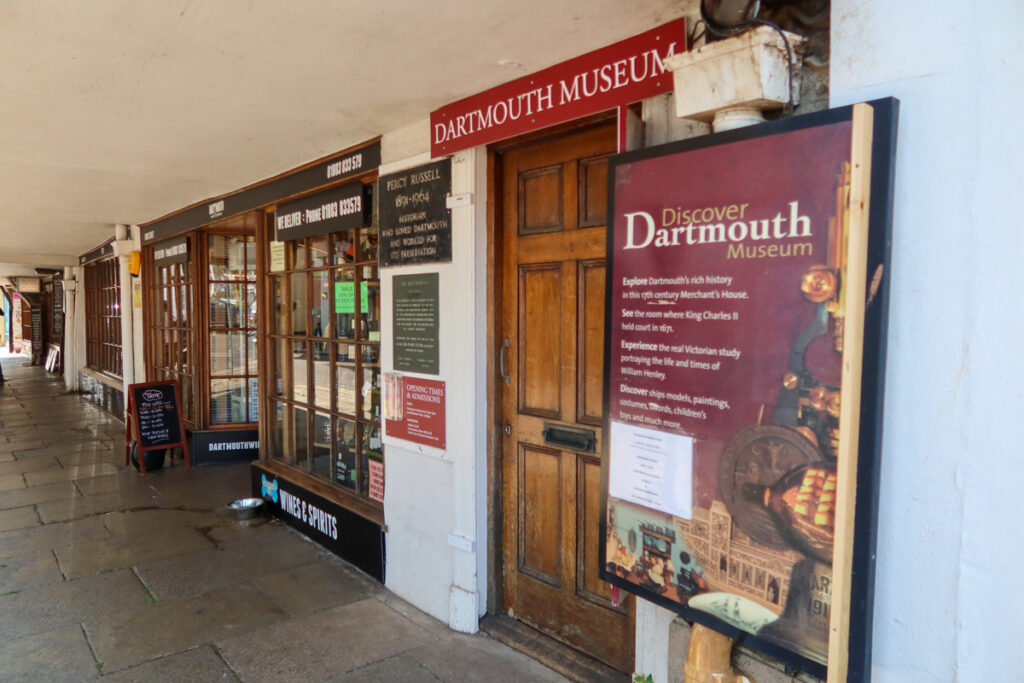
Did you know that steam power had its roots in Dartmouth? Or that it’s the home of primary Naval Officer training – and has been since 1863?
Learn about this and more at Dartmouth Museum.
The town museum is located in a merchant’s house which dates back to roughly 1640.
By visiting, you’ll uncover tales from sea merchant days, stories of smugglers and pirates, and tales from the town’s castle.
Woodlands Family Theme Park
Searching for somewhere to spend a family day out?
Woodlands Theme Park is the answer – it’s the largest theme park in Devon, with a zoo, rides and plenty of shops and places to eat.
With rides split into zones (such as the “Arctic Zone” and “Sea Monster Zone”), there’s something for everybody, from preschoolers to adults – they even host corporate away days!
Greenway House

Follow the footsteps of Agatha Christie at Greenway House.
The South West’s most famous crime writer, Agatha Christie was born in nearby Torquay, but moved away, ultimately purchasing Greenway House as a summer residence.
She set many of her novels in the nearby area – Dead Man’s Folly was actually set at Greenway!
Christie passed away in the 1970s and left her house to her daughter.
Eventually, it was sold to the National Trust which spent five million pounds on restoration.
The house is a grand Georgian three-story manor (although there’s been a house on this site for four centuries!) that’s been remodelled to resemble what it was like when Christie passed away.
On a recent visit, I felt like whispers of her past were at every step!
There are a few gardens, and you can also walk down to the quay area.
Here stands a fairytale cottage and it’s where the boats from Dartmouth arrive to and depart from.
This is the easiest form of transport if you’re visiting Greenway from Dartmouth; simply embark in the town, and 30 minutes later you’ll envelop yourself in the glorious world of Greenway!
Walk to Warfleet Creek
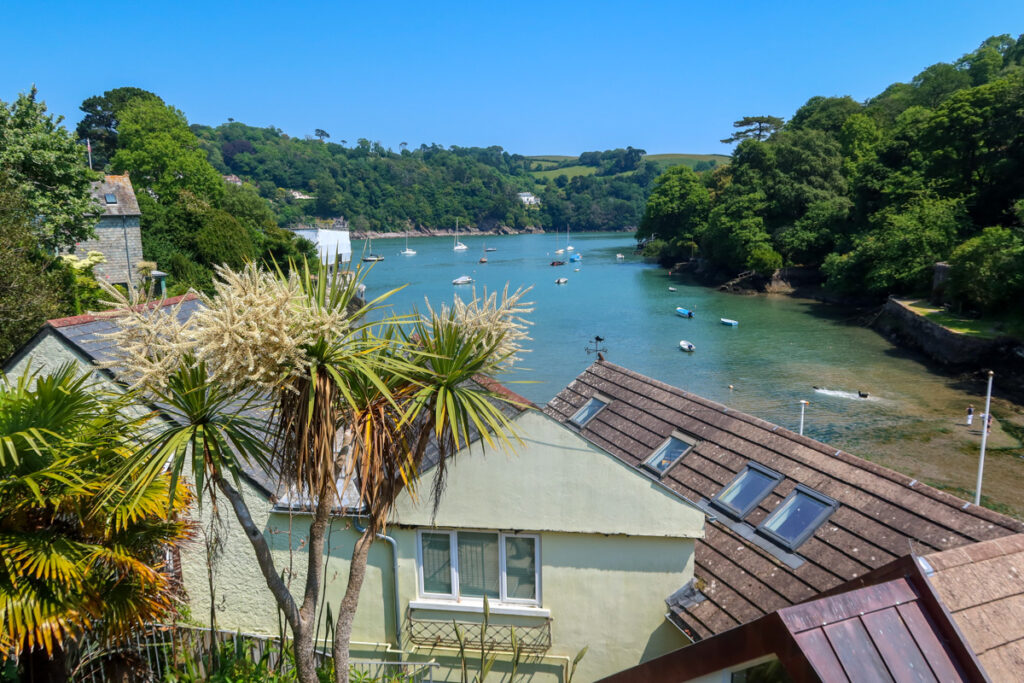
Warfleet Creek is a 15 minute walk out of Dartmouth centre (towards the castle).
On this walk, not only can you take in wonderful vistas of the estuary, but Warfleet is also steeped in history.
It was here where Royalist Troops attacked Dartmouth in the English Civil War – although its name actually has peaceful Saxon origins.
Warfleet Creek also used to be a centre for the industry – it has a historic pottery and there was once its own quay here.
Also, it was the former home of George Parker Bidder, who went on to design Victoria Docks in London and completed the Clifton Suspension Bridge in Bristol after Brunel’s death!
Walk to Blackpool or Strete
The South West Coast Path runs through Dartmouth, leading out to the beautiful English channel with plenty of secluded coves along the way.
Take it in by hiking to Blackpool (not the one in the north!) or Strete, two small villages in the South Hams.
Dartmouth to Blackpool Sands is an 11 mile route, whereas Strete is an extra two miles – although there are a few cut-throughs that you can take if you fancy a shorter hike.
The 93 bus connects both villages back to Dartmouth, so you don’t need to hike back!
Walk from Kingswear to Brixham
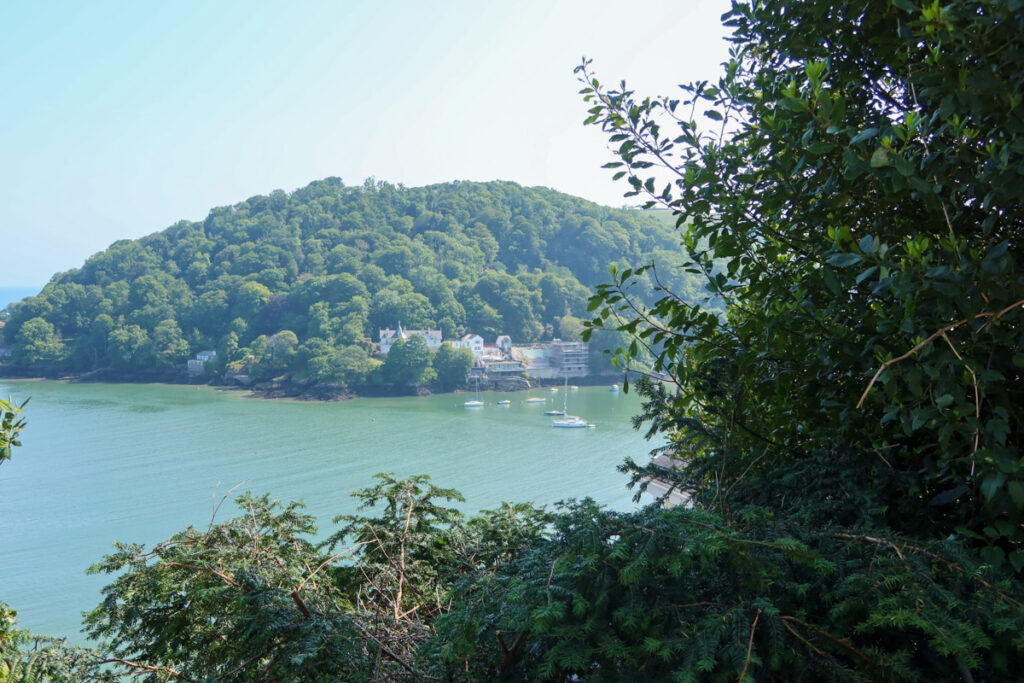
The coastal path spans the river and commences again in Kingswear, where a 10 mile coast path hike takes you around various headlands to Brixham, which is in the Torbay area.
Take in gorgeous views of Dartmouth Castle as the path leads to Kingswear Castle (this isn’t a historic attraction, but you can rent it out to stay in!), before venturing past the historically significant Brownstone Battery, a Second World War defensive coastal position that dates back to 1940.
Also look out for Dragon’s Tail, a rocky outcrop in the sea, named so because it resembles a dragon’s tail!
The trail then leads northwards, past Man Sands and St Mary’s Bay, before curling around the Berry Head National Nature Reserve (although you can cut this off and take a more direct route to Brixham).
To return to Dartmouth, take the number 18 bus back to Kingswear and then return via ferry.
Blackpool Sands Beach

No, this isn’t a mistake – there’s really a Blackpool Beach in South Devon!
It’s not named after Blackpool of the north, but a small village with the same name.
And no offence to Northern Blackpool, but I think ours is way better – on a clear day, you’ll be thinking you’re somewhere much more tropical!
In fact, I consider it one of the best beaches in Devon.
As a blue flag beach, the waters are clean and safe, and it’s a green-fringed, mostly shingle affair with kid-friendly sandy pits.
There’s a café which is open until 4:30 pm daily, along with stunning cliff views via the South West Coast Path.
It’s around a 15 minute drive from Dartmouth town, and definitely wins the award for the most beautiful beach in the Dartmouth area (in my opinion, at least!).
Slapton Sands Beach
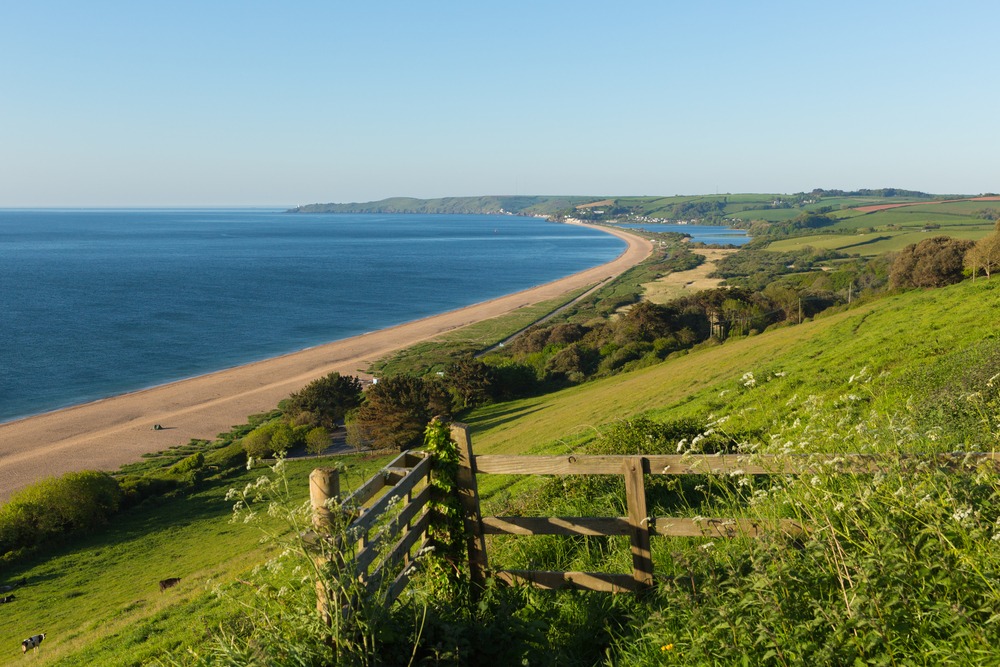
Snuggled halfway between Salcombe and Dartmouth, Slapton Sands is a one-stop beach destination for all the family.
It’s home to Slapton Ley Nature Reserve, the largest natural freshwater lake in the southwest, sprawling over a whopping 490 acres.
This lake is a renowned National Nature Reserve and a Site of Special Scientific Interest, thanks to its diverse nature.
With a three-mile-long shingle beach that separates Slapton Ley from the sea, Slapton Sands is a part of the scenic South West Coast Path.
Slapton Sands is also steeped in history.
It was the rehearsal ground for Exercise Tiger, a practice for the D-Day landings in Normandy that ended in tragedy.
German E-boats infiltrated the ships, causing over 700 American soldiers to perish in the frigid waters.
Sadly, friendly fire also claimed lives.
Pay your respects to these brave souls at the Exercise Tiger Memorial.
So while Slapton Sands is your go-to for sun-soaked sand and dreamy beach walks, it’s also a portal to Devon’s World War Two history.
Royal Avenue Gardens
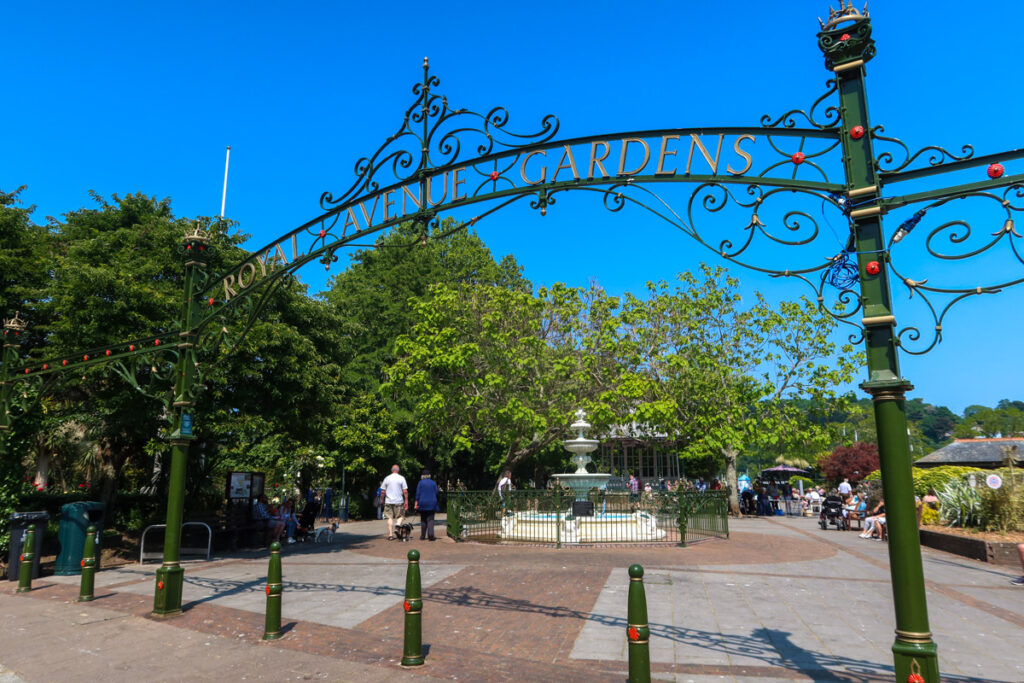
The grand Royal Avenue Gardens hark back to the Victorian era – they were created in 1887 and commemorated an 1886 visit of Queen Victoria to the gardens.
The ornamental triple-tier stone fountain, which is a landmark of the gardens, was installed in 1897 to commemorate Victoria’s Diamond Jubilee.
There’s also a grand bandstand which is still used today for town events.
As you explore the gardens, you’ll also notice a Mediterranean garden, Antipodean garden, Herb garden, Rose garden, Veale/Savill Memorial garden, war memorial and a pond.
Totnes to Dartmouth River Cruise

The best way to see the River Dart? On the water, of course!
Totnes and Dartmouth are connected by regular sightseeing cruises.
This hour-and-a-half trip will transport you from the historic hubbub of Totnes, meandering through green fields, before bypassing some of the River Dart’s most scenic villages and ultimately making it to Dartmouth.
You can, of course, take it the other way too (from Dartmouth to Totnes).
Regular buses connect the two towns for your return leg, or you can make use of the steam train Round Robin ticket (more on that below!).
I did the Totnes to Dartmouth river cruise when I was journeying to the town on my recent trip and was kept entertained by a lively commentary detailing stories about villages and buildings we passed and information about local wildlife.
Dartmouth steam rail from Kingswear to Paignton

This is technically a Kingswear attraction, but it’s owned by the Dartmouth Steam Railway and River Boat Company and is a must-do in the area.
Plus, you can easily add it onto a Dartmouth trip by making use of their Round Robin Ticket.
The Dartmouth Steam Railway and River Boat Company incorporates the Totnes – Dartmouth River Cruise (as mentioned above), the steam train from Kingswear to Paignton, along with a bus from Paignton to Totnes and the ferry from Dartmouth to Kingswear.
You can just do one segment, or enjoy an entire day out by testing them all!
I did all of them on a recent trip (it worked out really well because from Paignton I can take a scenic train home to Exmouth!).
The steam train follows the historic rail route from Paignton down to Kingswear, which closed after the Beeching Report in the 1960s.
It became privately owned and recently celebrated its 50th anniversary of offering heritage train rides.
It’s an old-timey steam train – don’t expect WiFi or USB chargers – that takes travellers first through stunning River Dart scenery, and then along Torbay’s gorgeous coastline.
The stations are an attraction in themselves – full of vintage posters and memorabilia, they both boast plenty of photo opportunities!
Britannia Royal Naval College
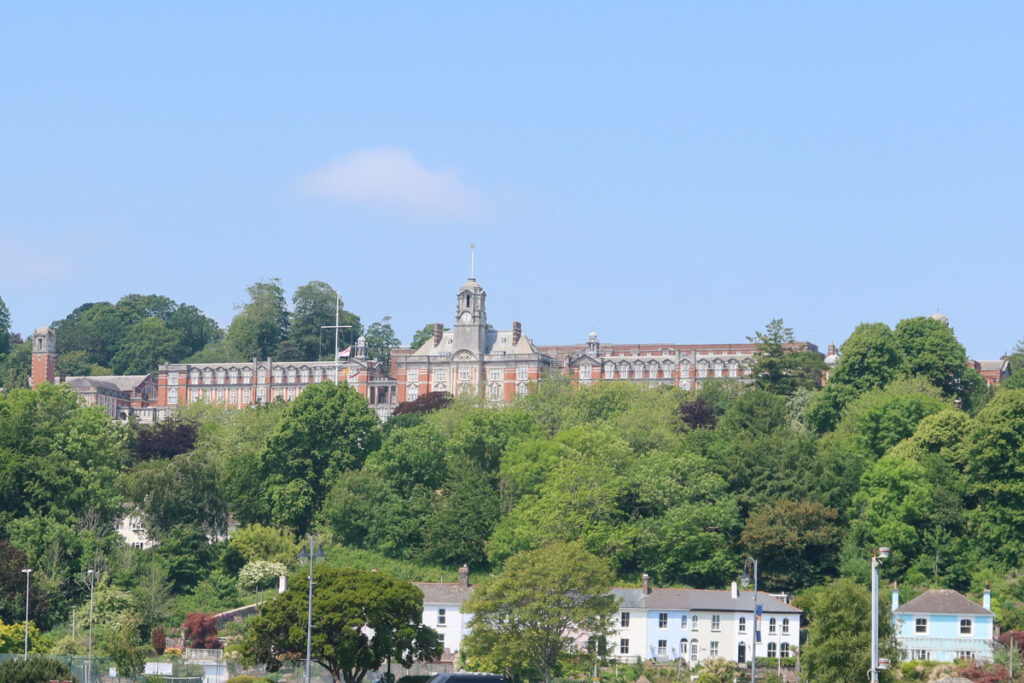
Dartmouth is perhaps most famous for its naval college, an imposing building sprawling over the top of Dartmouth’s skyline.
Dating back to 1863 (although the current building was completed in 1905), the Britannia Royal Naval College is the main establishment for initial officer training for the British Royal Navy.
It has boasted countless regal residents throughout the years, including King George V, King George VI, Prince Philip, Charles III and the Prince of Wales.
In fact, Prince Philip had his first proper encounter with the then Princess Elizabeth right here, in Dartmouth!
You can’t access the college independently, but guided tours take place throughout the year, where you’ll learn about the establishment and its fascinating past.
Click here to read more about the Royal Naval College.
Bayards Cove Fort
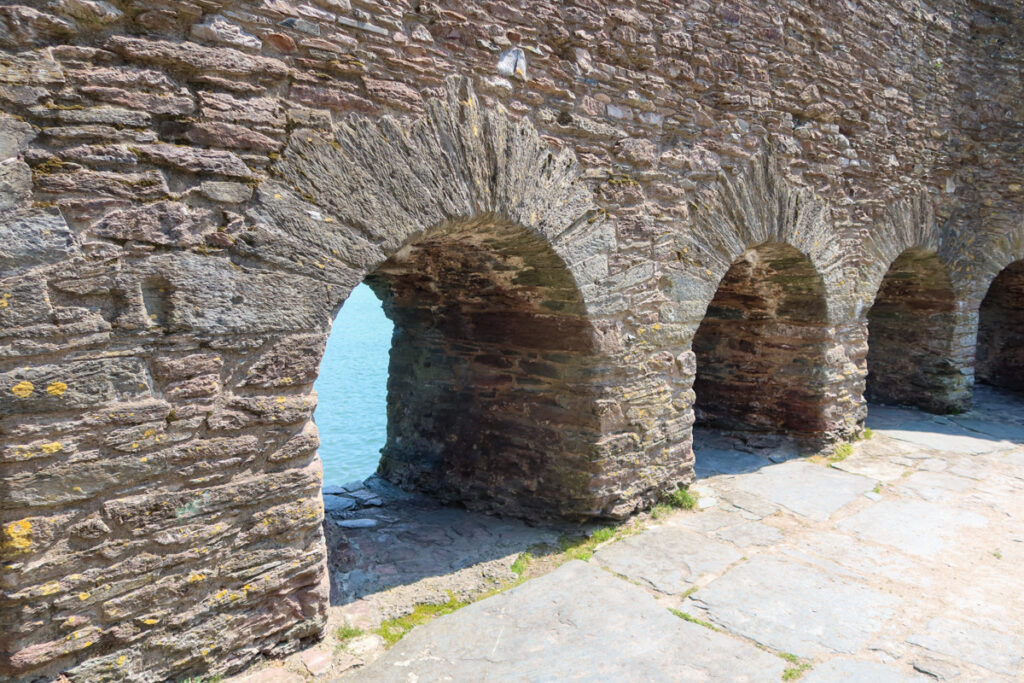
This is a tiny Dartmouth attraction, but it’s worth popping into!
Bayards Cove Fort is another castle, much closer to Dartmouth Harbour.
It was built in the Tudor era (between 1522 and 1536) as a last line of defence for any enemy ships who got past Dartmouth and Kingswear Castles.
Unlike Dartmouth Castle, it’s tiny – and due to its petite size, is unstaffed, free and open all hours (but it’s also owned by the English Heritage).
Sugary Cove Beach
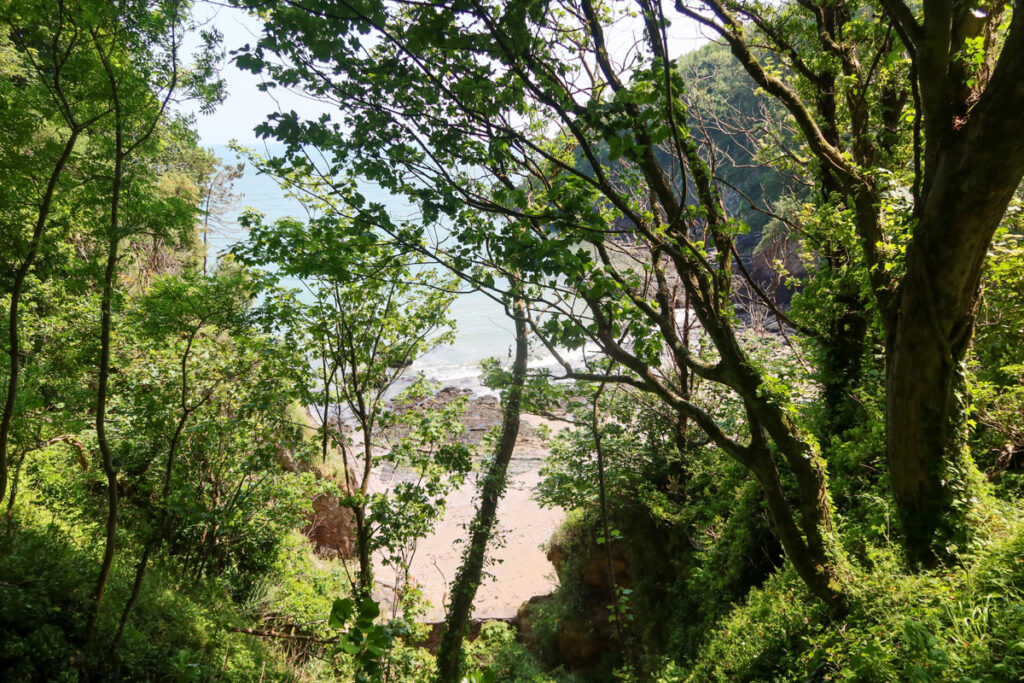
The closest beach to Dartmouth Centre, Sugary Cove sits next to Dartmouth Castle.
Despite its proximity to the town and heritage attraction, Sugary Cove remains quiet and serene.
It’s mostly shingle and is a peaceful spot to spend a sunny afternoon.
Dogs are welcome all year.
I also love the pathway weaving around Sugary Cove, where there are some stunning views of the coastline.
Thomas Newcomen Engine Exhibition
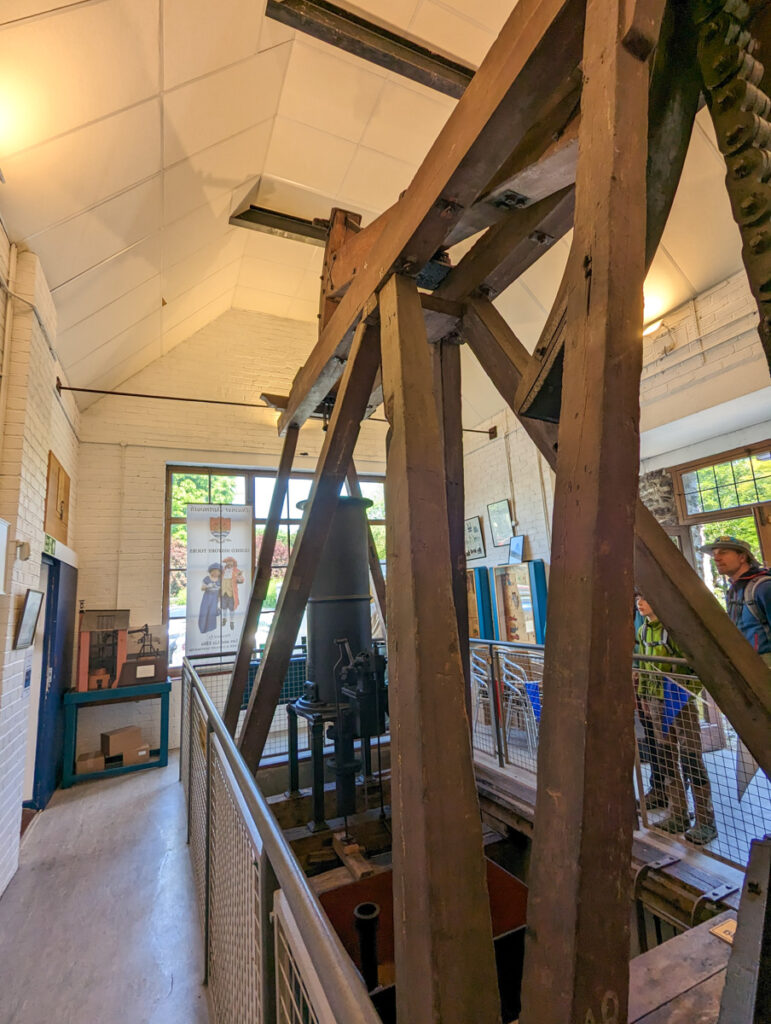
Did you know that a Dartmouth man created the first steam engine?
Discover the story of Thomas Newcomen at the free engine exhibition, which is located in the Royal Avenue Gardens (as part of the Dartmouth visitor centre).
Take a look at the steam engine and read the exhibitions all about Newcomen, a pioneer of steam in the UK.
Take the ferry over to Kingswear
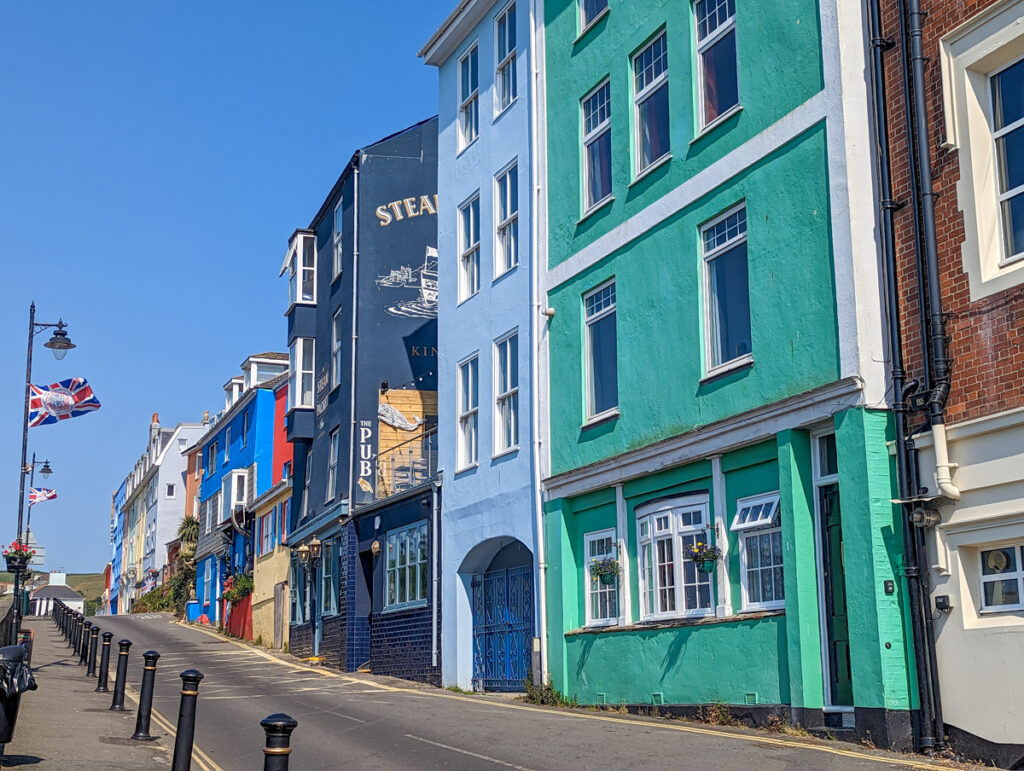
Even if you aren’t heading over to take the train, it’s still worth popping over to the charming village of Kingswear, which sits on the other side of the Dart Estuary.
Kingswear’s home to a row of beautifully coloured houses, a variety of chilled-out pubs and a stunning coast path.
I love walking south, towards the coastline, and catching a glorious view of Dartmouth Castle.
Apart from around the train station, Kingswear is much quieter than Dartmouth, with just a couple of shops and pubs.
Dartmouth shops

Being a popular resort town, Dartmouth boasts a range of shops where you can sample local produce or pick up souvenirs. A few I noticed while walking around were:
- Escape to the Coast: A seaside-themed gift shop and boutique store.
- Good Intent: A vibrant store where you can purchase Devonshire fudge, cream tea hampers and rich ice cream – perfect for anyone with a sweet tooth!
- Salcombe Gin Distilling Co: A branch of the popular gin distillery in nearby Salcombe, here you can sample and purchase a wide variety of beverages.
- Compass Books: This is Dartmouth’s second-hand bookstore!
Dartmouth harbour
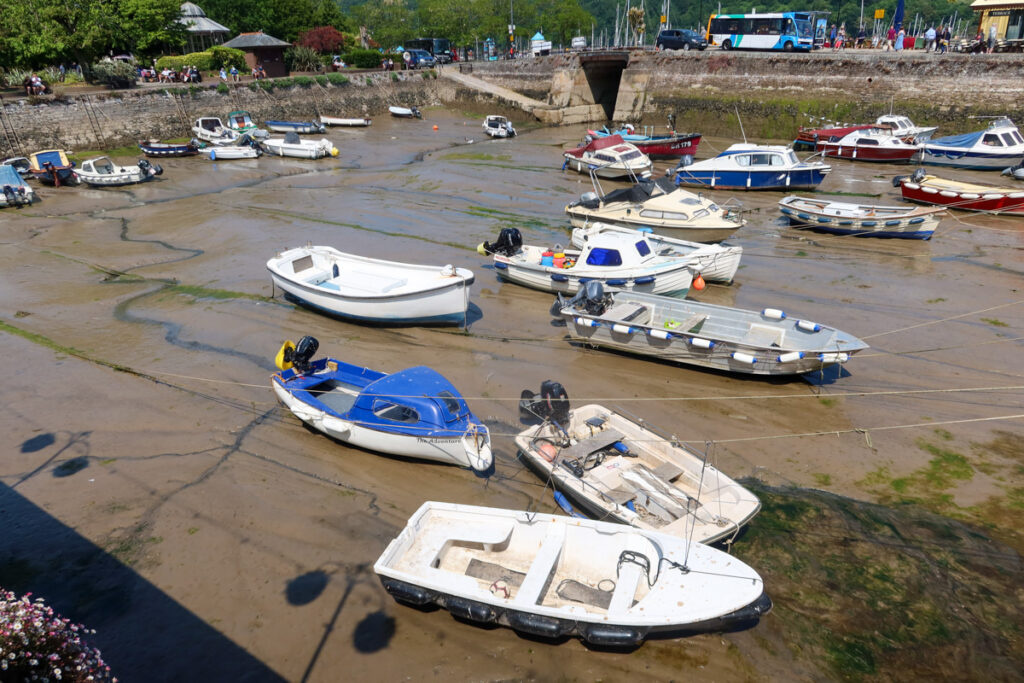
Dartmouth Harbour’s only small, but it’s a pleasant place to amble around.
When I was last there, the tide was out, but boats remained on the harbour bed.
Visit Dittisham
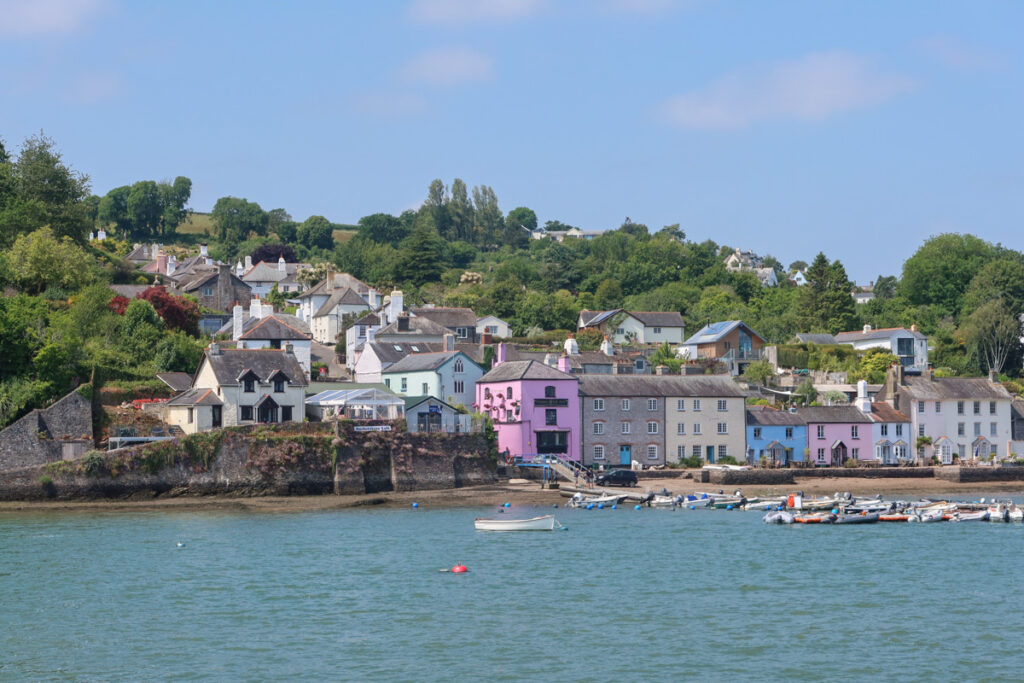
“We pronounce it Ditsm now, for no other reason than we don’t like long words”, the skipper on the Totnes to Dartmouth boat told us as we ploughed down the river.
Dittisham is an unspoilt village, perched serenely on the River Dart’s banks.
While it seems away from hoards of tourists, a few celebrities have heard of its allures and bought property here – including Kate Winslet and the lead singer of Jamiroquai!
Home to a mix of colourful cottages and two local pubs – including the garishly pink Ferry Boat Inn – there’s not a huge amount to do in town, but it’s worth the trip from Dartmouth (30 minute boat ride either way) for a touch of serenity.
Visit Stoke Gabriel
Another village to not miss on the River Dart is Stoke Gabriel.
Situated in the heart of the South Devon Area of Outstanding Natural Beauty (AONB), this historic village sits at the mouth of one of the Dart’s estuaries.
It’s home to an 800-year-old yew tree, a few excellent pubs and is a popular place for paddleboarding and other water sports.
Take a hike on the Dart Valley Trail
The Dart Valley Trail is a long-distance path that leads all the way up the river to Totnes.
Most hikers don’t venture that far; a popular option is the Dartmouth to Dittisham Walk.
To do this, you’ll begin at Dartmouth Harbour’s tourist information centre and venture up the river, crossing Old Mill Creek, and enjoying rural views along the way, before reaching Dittisham (around 8.8 miles/14.2km).
From here, you can take a boat back to Dartmouth, or ferries depart across the river to Agatha Christie’s Greenway, which is owned by the National Trust.
Explore the enchanting Greenway Estate if you desire, and then ascend Oakham Hill, walk through Long Wood, and reach Kingswear (around 4.5 miles).
From here, you can catch the ferry back to Dartmouth!
Where to stay in Dartmouth
Although Dartmouth’s only a small town, there are a fair few places to stay! Here are some top picks.
Browns Hotel
Experience the charm of Browns Hotel, an independent property located just 200 meters from the Dartmouth waterfront.
Step into the eclectic blend of traditional and modern decor that greets you at the ground-floor reception, wine bar and restaurant.
Each room has its own unique charm, with complimentary Wi-Fi, an en suite power shower, and a flat-screen TV as featured amenities, all boasting superb mood lighting.
Click here to read more about Browns Hotel.
Royal Castle Hotel
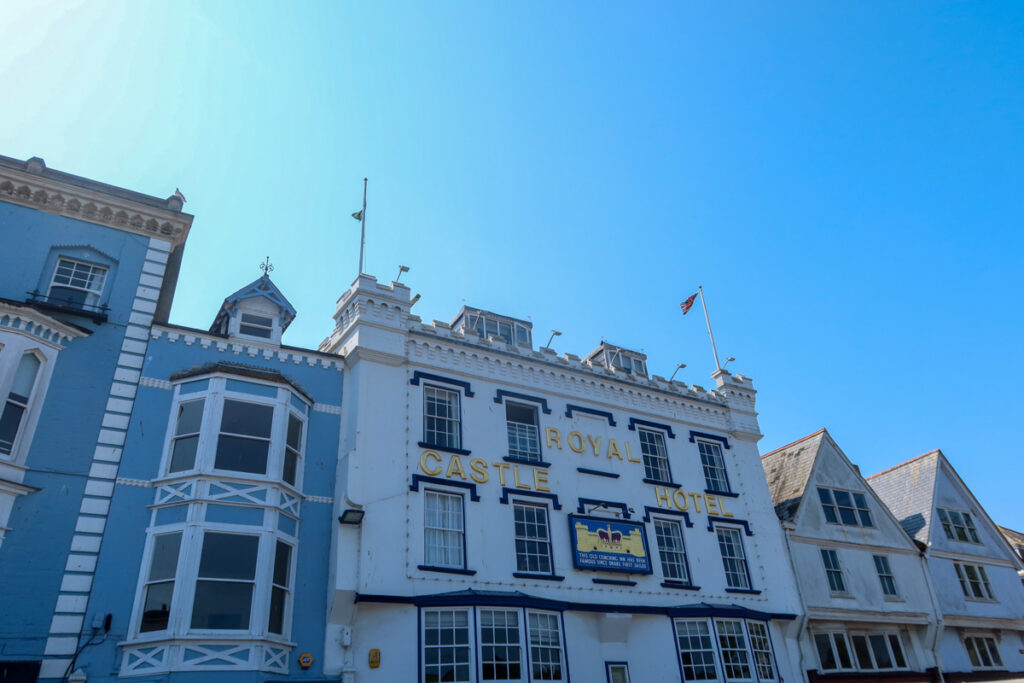
The Royal Castle Hotel is a 17th-century gem with breathtaking views of the harbour and River Dart.
Enjoy bright, airy rooms with free Wi-Fi, some boasting river views, four-poster beds, and spa baths.
Indulge in delicious cuisine at the stylish Grill Room, while the Harbour and Galleon bars offer cosy settings with real log fires.
Click here to read more about The Royal Castle Hotel.
Seale Arms
Stay in the revamped Seale Arms: a pub with stylish rooms in Dartmouth.
Each room offers a desk and a flat-screen TV, adorned with fresh bed linen and towels.
Delectable Barrel and Stone pizzas are served at the pub nightly, along with a well-stocked bar where you can enjoy a nightcap!
Click here to read more about Seale Arms.
Where to eat in Dartmouth
Dartmouth has a varied dining scene, and there’s generally something to suit every palate.
Alf Resco Cafe

Cafe Alf Resco emphasises local, freshly prepared fare, with baked bread and pastries from Dartmouth, freshly squeezed orange juice, and a delightful home blend coffee, roasted locally.
Indulge in famous fry-ups with veggie options for breakfast, or for lunch sample filled baguettes, pastries or toasties.
Embankment Bistro
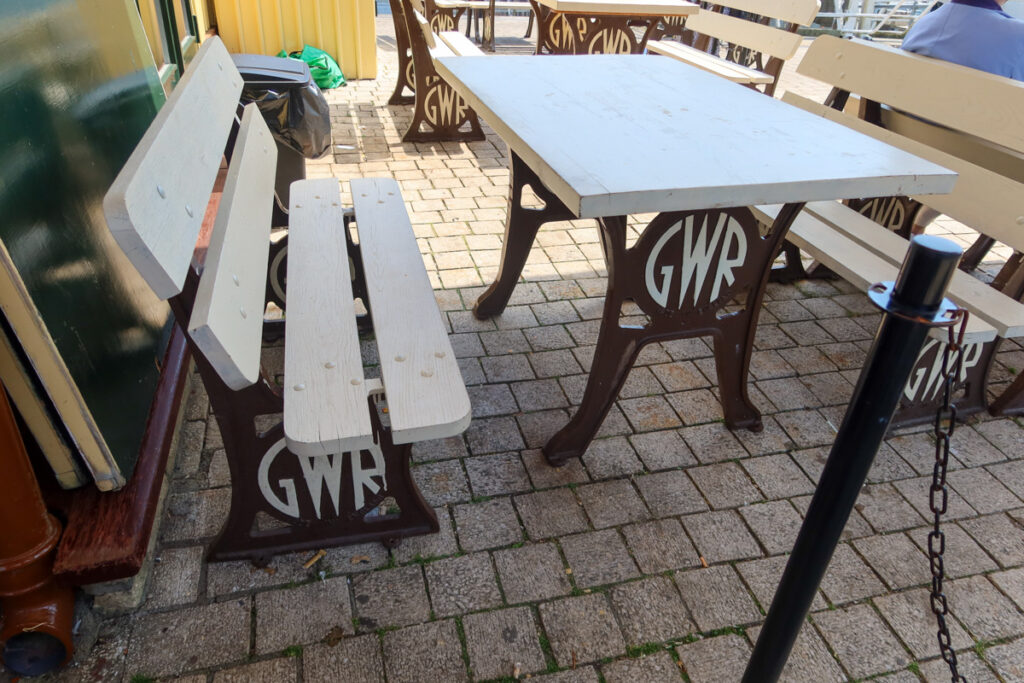
I was very tempted to try out this lovely train-themed cafe, complete with outside tables branded with the GWR logo – but while the food looked lovely, it was a bit too fancy to eat on my own!
On the menu, you’ll find dishes like artichoke ravioli, beetroot and goat’s cheese tart or delicious mussels with cider cream.
Rockfish
A popular South Devon and Dorset establishment, Rockfish prides itself on serving up sustainable, freshly-caught seafood (it has the tagline “tomorrow’s fish is still in the sea”!).
I’ve eaten at the Exeter and Exmouth branches of Rockfish (despite the fact that I don’t actually eat fish) and loved its atmosphere and diverse menu.
Seafood is certainly the dish of the day, everyday here – but they serve up a mean veggie burger and a few meat dishes too.
Places to visit near Dartmouth
If you’re based in Dartmouth for a few days, you’ll be delighted to know that there’s an abundance of places to visit in close proximity!
Most spots on the south coast aren’t too far – I visited from Exmouth, which is just over an hour’s drive away, and places like Teignmouth and Dawlish (on the west side of the Exe Estuary) are much closer – but here are some of the closest areas for day trips.
Totnes

The ancient market town of Totnes is drenched in fascinating history, from its Norman Castle to its winding medieval streets.
Nowadays, it’s quite an artsy town, with galleries popping up and plenty of cafes such as Gather, which serves fresh food made with local ingredients.
Once you’ve enjoyed Totnes’s historical attractions, head down to the river for a relaxing walk, perhaps popping off at the Seven Stars Inn for a drink on the way.
You can reach Totnes by car or number 92 bus – but my preferred way is definitely by cruising up the River Dart on a sightseeing boat!
Check out all of the best things to do in Totnes by clicking here.
Salcombe
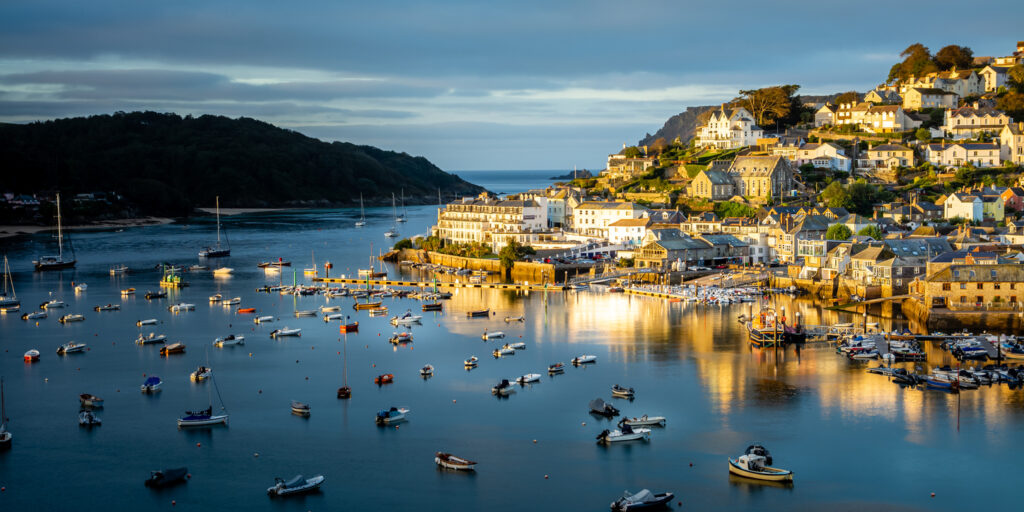
The pretty coastal town of Salcombe is one of the most popular places to visit in Devon thanks to its seaside charm – rolling hills descend into the Kingsbridge Estuary, with fishing cottages lining the streets.
As a local, Salcombe’s not my favourite Devon town – it’s usually hectic during the summer months – but I appreciate its beauty and charms!
It’s a popular spot for water sports and coastal walks, or you could visit the famous Salcombe Gin Distillery (a personal highlight).
Torbay
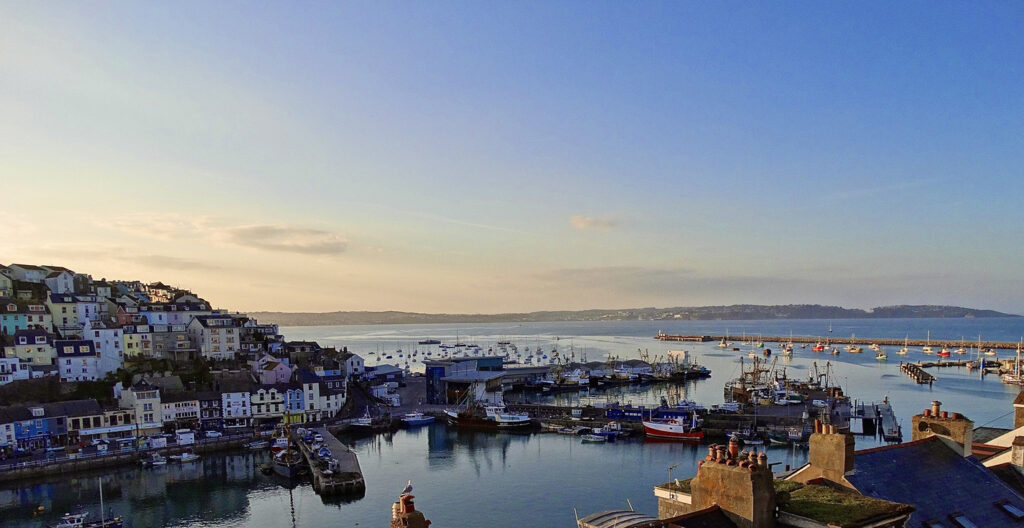
When you’re based in Dartmouth, you’re only a short journey from Torbay, which is an area of South Devon consisting of three towns: Torquay, Paignton and Brixham.
Torbay’s home to a plethora of popular attractions, including Torre Abbey, Bygones, Kent’s Cavern Caves, Splashdown Quaywest and Babbacombe Model Village.
While the town centres of Torquay and Paignton have seen better days, the sheer amount of family-friendly attractions make this area well worth visiting, especially if you’re in Devon with kids.
Out of the town centre, Torbay also has some glorious beaches. Oddicombe Beach (home to the Babbacombe Cliff Railway), Meadfoot Beach and Goodrington Sands are personal favourites of mine!
Check out all of the best things to do in Torquay by clicking here, or the best things to do in Paignton by clicking here.
Dartmoor
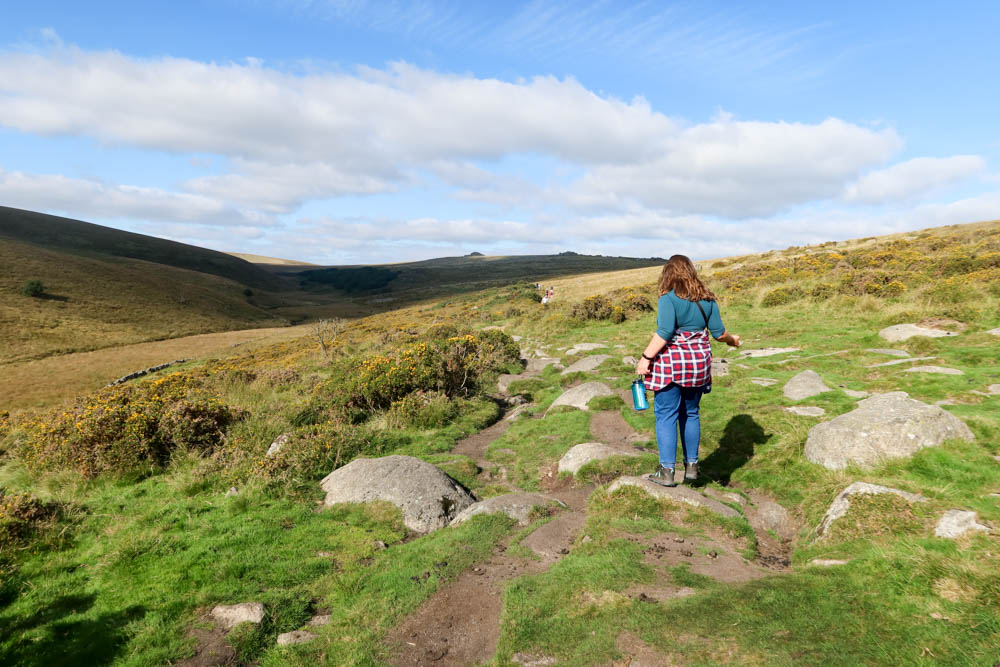
Despite their similarity in names (the River Dart does indeed begin on Dartmoor), the brooding moorland of Dartmoor is at least a 45 minute drive from Dartmouth.
However, if you’re spending a holiday in Devon and want to see somewhere completely different to all the beaches, I highly recommend visiting.
Dartmoor’s a sprawling landscape, punctuated by tors – hills with rocks at the summit – ancient ruins, patches of temperate rainforest and a few rivers and waterfalls.
There are endless things to do in Dartmoor – I’ve put together the best in this blog post – but among my favourites are Haytor Rocks, Brentor, Lydford Gorge, Becky Falls and Wistman’s Wood.
How to get to Dartmouth
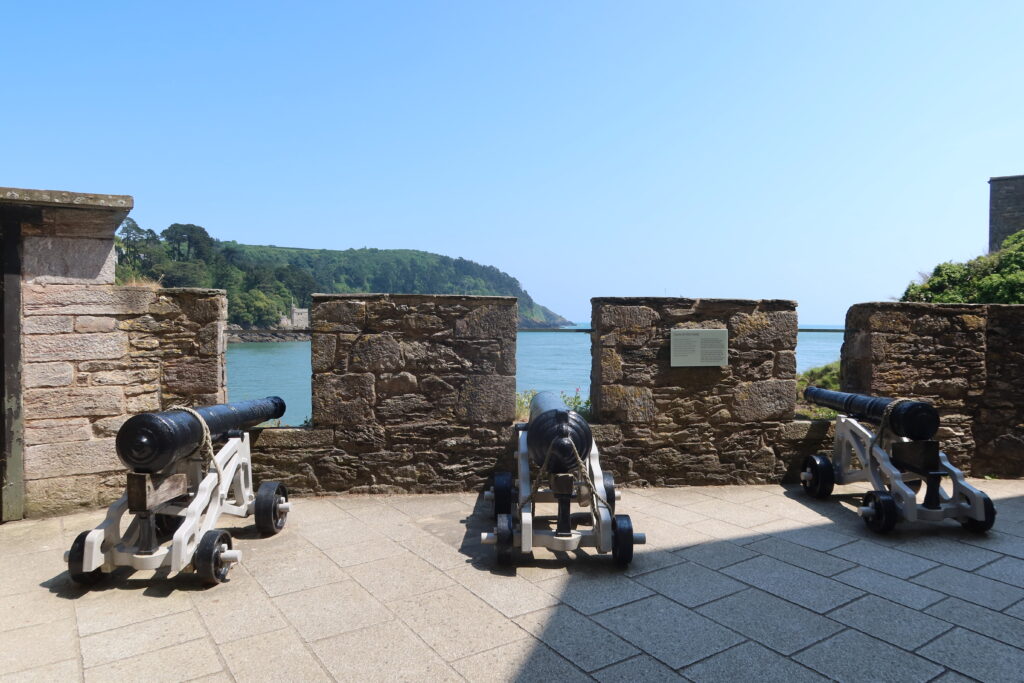
To reach the seaside resort of Dartmouth, take the A38 at Exeter (which connects to the M5) and then turn off at the A384, which travels through Totnes.
Take the A381 and the A3122 to head down to Dartmouth through the scenic South Hams countryside.
The drive from London takes approximately 3.5 hours (215 miles), and from Bristol, it’s around 2 hours (110 miles) with no traffic – although there usually is some!
Dartmouth is approximately 40 miles from Exeter and 30 miles from Plymouth, making it a convenient destination for a day trip or a longer getaway.
When is the best time to visit Dartmouth?
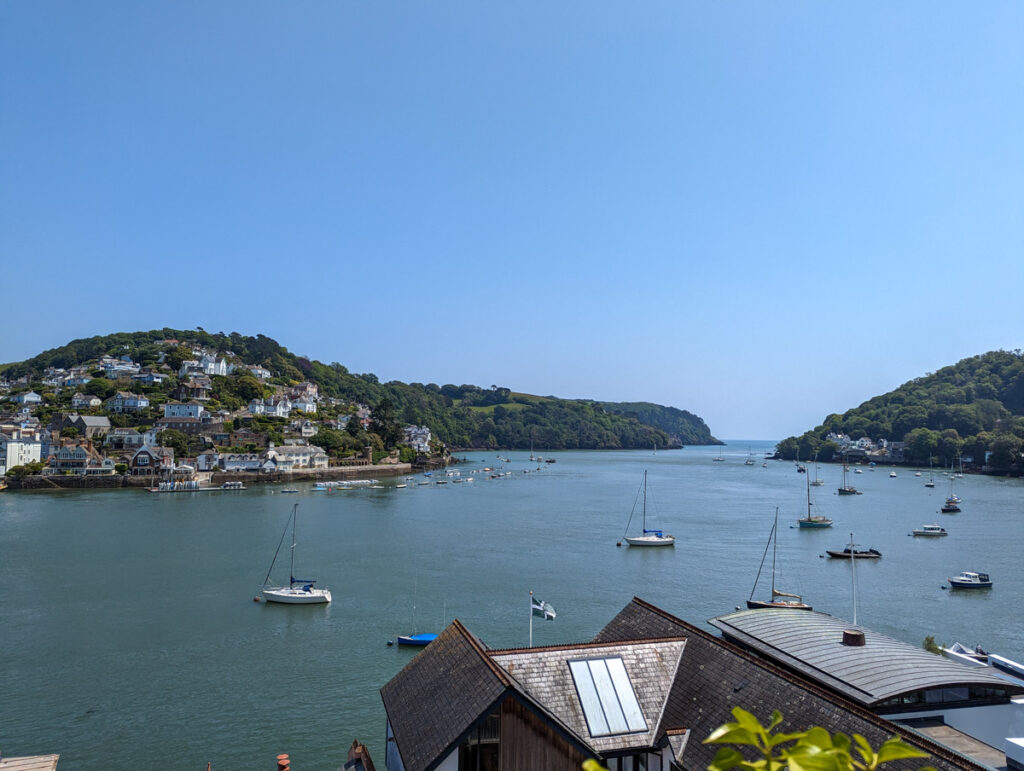
Summer’s often thought of as the best time to visit Devon and Cornwall – it’s when the weather’s warmest and sunny days are most likely, after all!
But Dartmouth isn’t a huge town, which means that it can become rather crowded in peak season.
If you can, I’d recommend avoiding during latter July and August (during school holidays) and favouring May, June or September if you want a summer break.
Seasonal events in the summer include the Dartmouth Royal Regatta and Dartmouth Shakespeare Week, but there’s also the Dart Music Festival each Spring and the Dartmouth Food Festival every autumn.
There’s no reason why you can’t visit Dartmouth (and wider Devon) in winter though – most of the other tourists are gone, and it has a much more local vibe!
FAQs about visiting Dartmouth
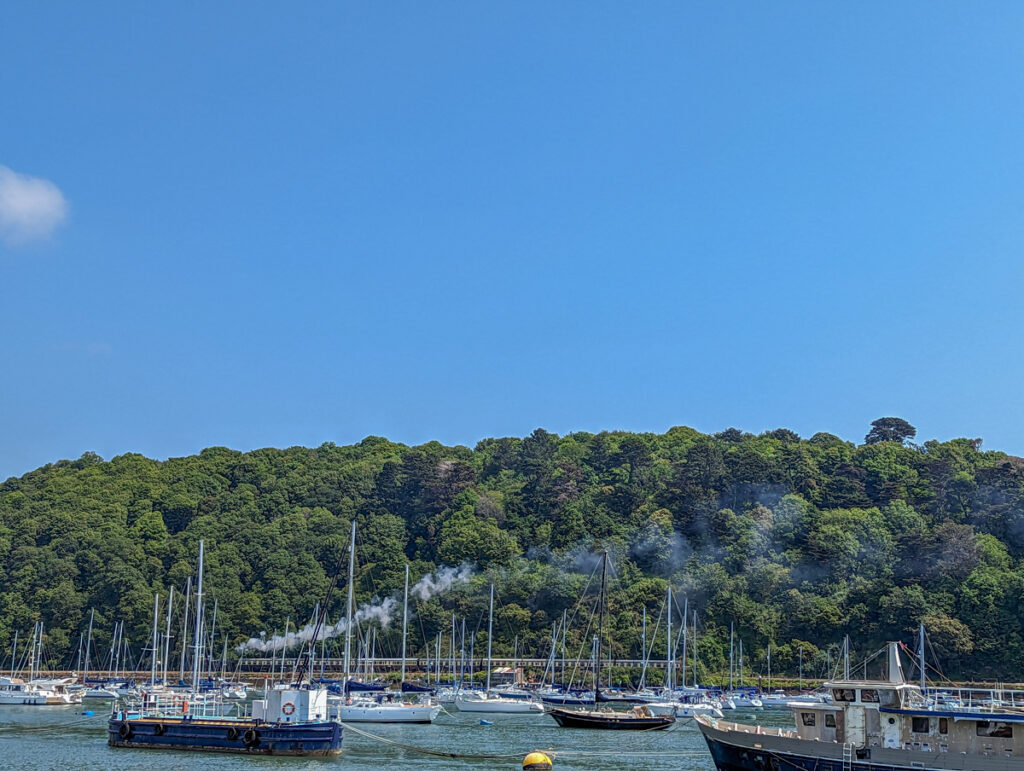
Is Dartmouth UK worth visiting?
Absolutely, Dartmouth is worth visiting.
Its rich history, wonderful castle picturesque landscapes, charming streets, and stunning harbour make it an epic destination. If you’re feeling hungry, there’s a multitude of restaurants, or if you want some retail therapy, there are plenty of shops!
What is Dartmouth UK known for?
Dartmouth is renowned for its beautiful and historic harbour, its Royal Naval College and the steam train that runs along the opposite side of the river. It also hosts the famous Dartmouth Regatta every summer, attracting tourists with its unique boat races, parades, and fireworks.
Can you walk around Dartmouth?
Yes, Dartmouth is a great place for walks. It has a compact layout and pedestrian-friendly streets which make it easy to explore on foot. The South West Coast Path and Dart Valley Trail also offer beautiful coastal walks with breathtaking views.
Does Dartmouth have a beach?
Yes, Dartmouth has access to several beaches, although there isn’t one bang in the town centre. Blackpool Sands (15 minute drive, bus routes available) is a popular choice, known for its clear waters and golden sands. Slapton Sands is also close by.
The closest beach to Dartmouth town centre is Sugary Cove.
What is unique about Dartmouth?
Dartmouth’s unique appeal lies in its blend of history, maritime heritage, and natural beauty.
The town is home to a number of listed buildings, beautiful landscapes, and an impressive harbour, providing a unique charm that’s hard to find elsewhere.
Is Dartmouth close to a city?
Dartmouth may be a small town, but it’s not far from larger cities.
Plymouth is the nearest city, about an hour away by car. Exeter is just over an hour away too. While you won’t be able to pop in, you could visit either on a day trip from Dartmouth!
Is Dartmouth a seaside town?
Yes and no – while it’s right next to the coast, it’s technically positioned right on the end of the River Dart. It’s about a mile distance to Dartmouth Castle from the town centre, which is where the seaside officially starts! However, due to its proximity, Dartmouth’s often considered a seaside town.
Are you ready to visit Dartmouth?
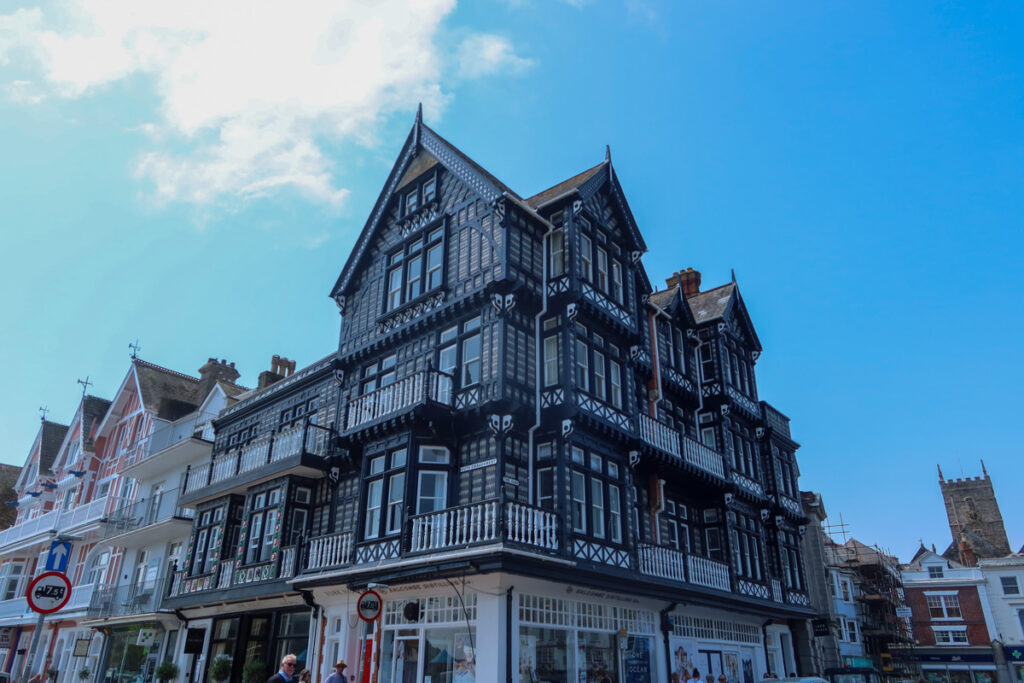
Whether you want to spend your days taking in fabulous views of the waterfront, exploring the Dart Estuary by boat or on foot, or enjoying the buzzing atmosphere of the town centre, there’s so much to enjoy in Dartmouth.
With plenty of activities for families, nature attractions and a fair few decent restaurants, Dartmouth has something for everybody!

